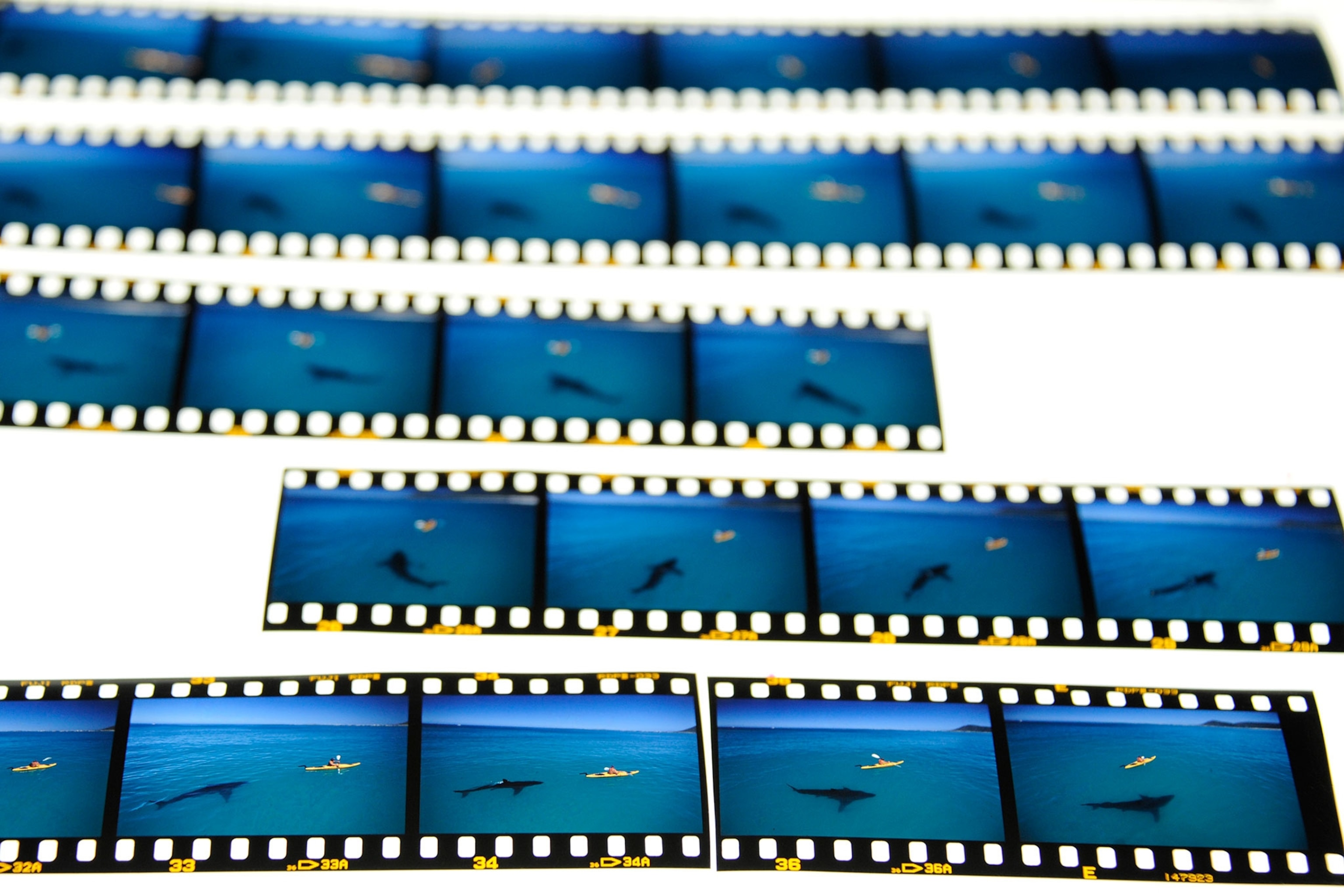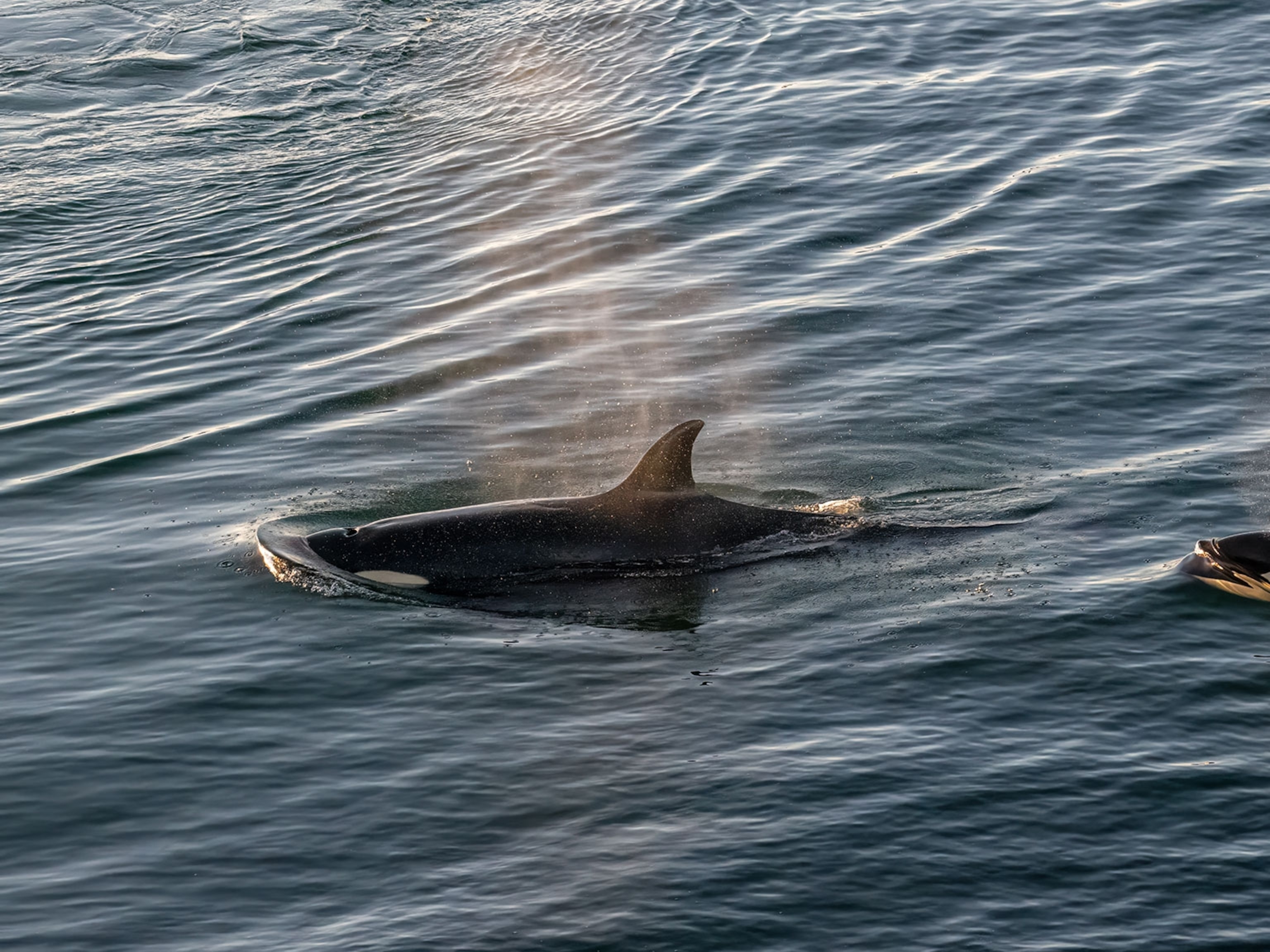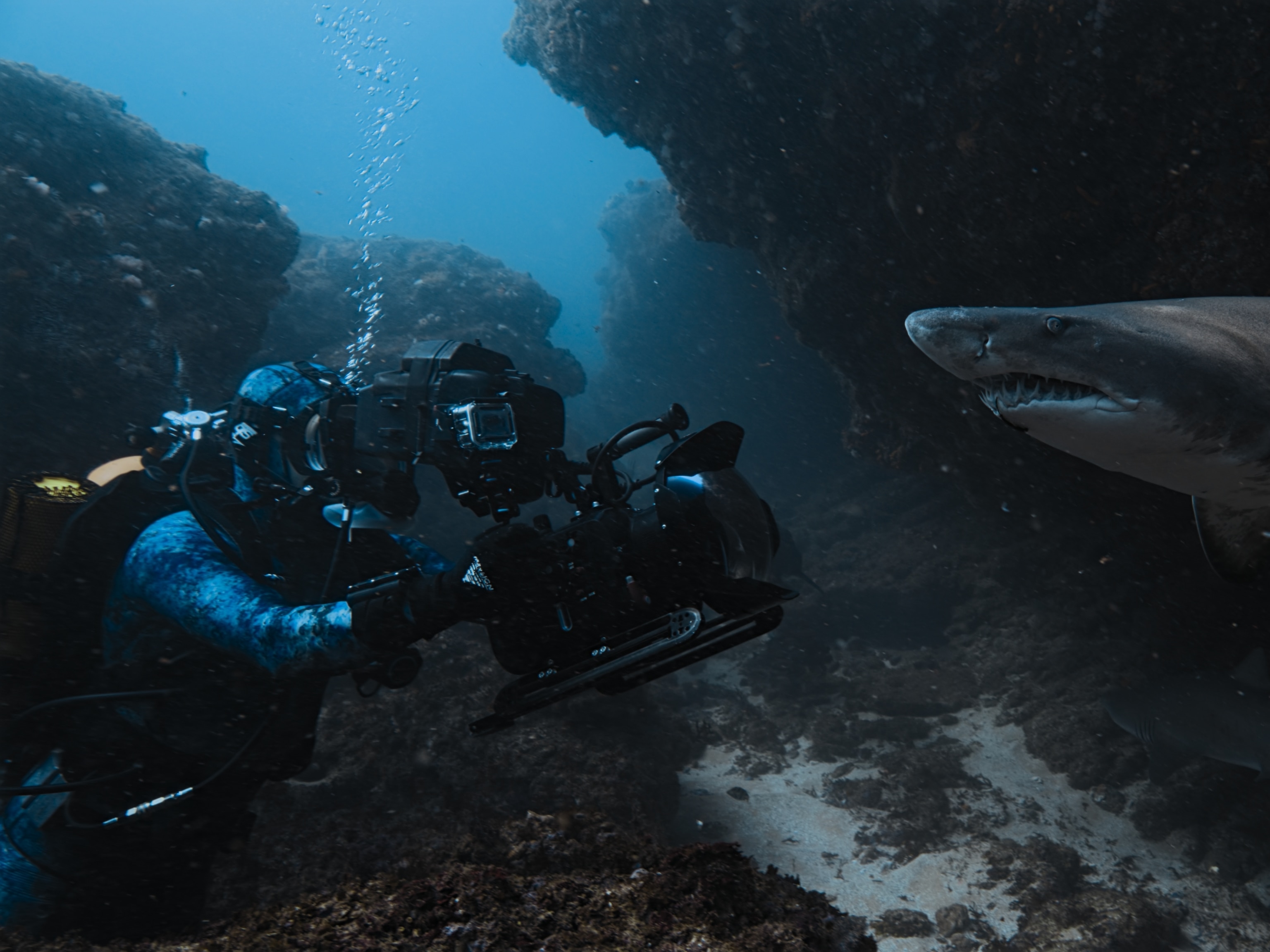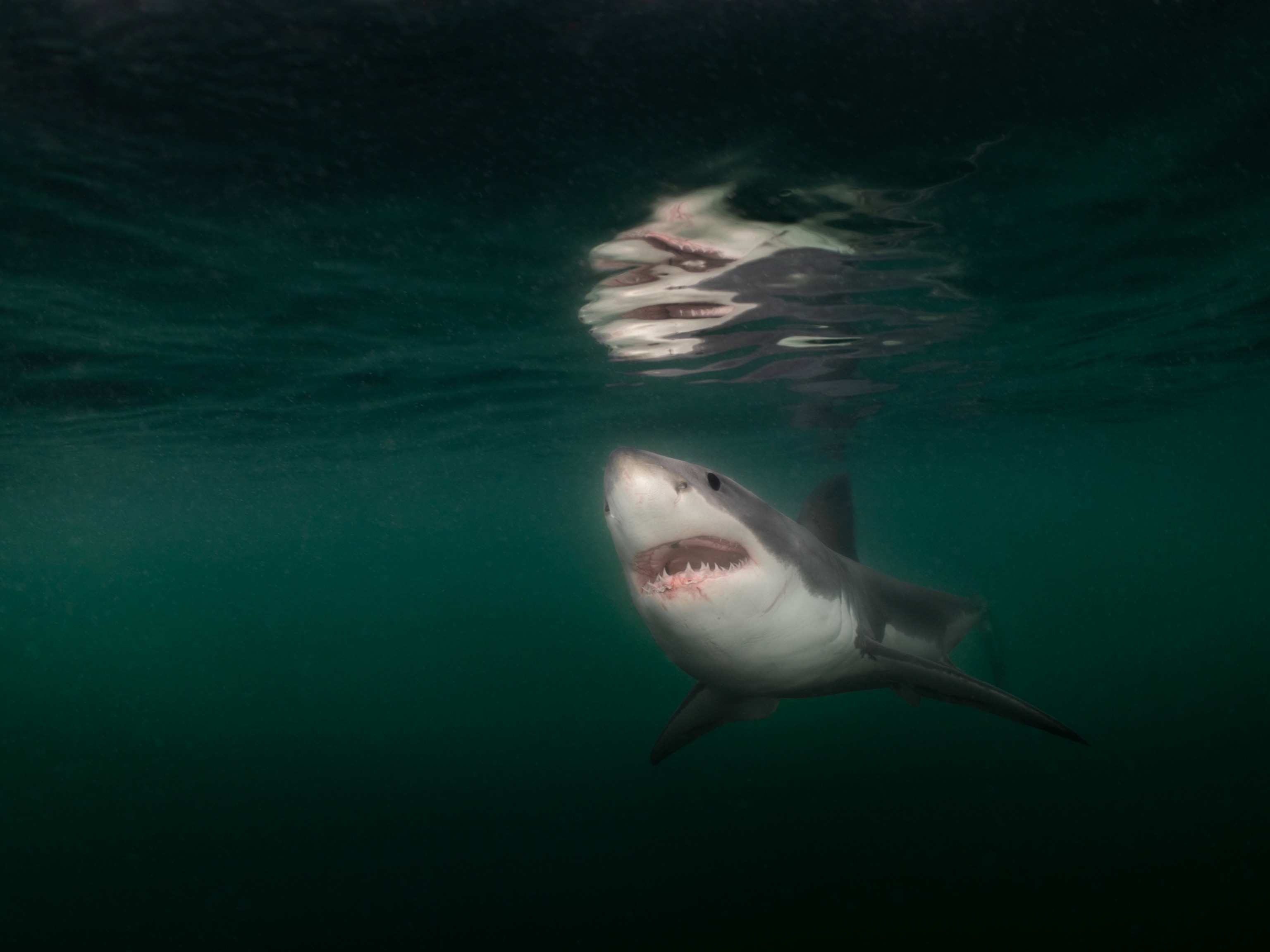During 2017’s Hurricane Harvey, a photograph of a shark swimming down a flooded street in Houston was posted on Twitter—and retweeted thousands of times. Around that time, National Geographic photographer Thomas Peschak received an email with the words, “Guess who’s back?”
Peschak knows that great white shark well. He photographed it 15 years ago following scientist Trey Snow in a bright yellow kayak off South Africa. Ever since then, people have been photoshopping the shark into their pictures to fake scary scenes.
Like many photographs that capture our attention, Peschak's original shot of the shark resulted from a combination of ingenuity, patience, and serendipity. (See “14 Not-Fake Shark Pictures From a Real Nat Geo Photographer.”)
In 2003 marine scientist Michael Scholl of the White Shark Trust had alerted Peschak to an unusually large number of sharks cruising the southernmost shoreline of South Africa.
The pair tried following the sharks in a research boat, but found the engine noise altered the sharks’ behavior. Then Peschak had an idea. He had recently purchased a sea kayak, which would be less disruptive to the fish. Why not attempt to track them that way?
“Because it was my dumbass idea, I got to try it first,” he says.
Right Place, Right Time
It worked. “With a GPS mounted on the kayak, we were able to follow the shark into shallow water and observe natural behavior,” Peschak says. “Once that occurred, the photographer in me switched on again.”

He spent the next several months out on the research boat, waiting for calm conditions to deploy the kayak once again. (Hear more from Peschak on his work photographing sharks.)
Peschak was ready when the day finally came. From his vantage point, harnessed to the boat’s flybridge, he patiently watched as Scholl tracked sharks around Haaibaai, Afrikans for "Shark Bay."
A nice scene, but it wasn’t doing it for him.
“Then we get this one bold shark that comes up behind the kayak and quickly rises in the water column,” he says. “I am down to the last five or six frames on my roll of film. As the dorsal fin breaks the surface, the scientist in the kayak looks back, then click.
“Instead of the scientist tracking the shark the shark is now tracking the scientist, which was much more compelling. Sometimes the best images are not the ones we planned for.”
A Shark Goes Viral
The photograph, first published in South African newspapers and magazines, instantly resonated with the public.
“I got 100,000 visitors to my website in the first 24 hours, which in 2003 was viral,” he laughs. “I wasn’t expecting that everybody would think it was fake.”
Conspiracy theories flourished in online discussion forums, with commenters analyzing everything from the angle of shadows to comparing ripples on either side of the shark to determine whether not it had been cloned.
The attention was ultimately a curse and a blessing. (See National Geographic photographers’ favorite wildlife pictures.)
The picture put Peschak on the map as a photographer, but instead of opening people’s eyes to how amazing sharks are, all anyone could talk about at the time was whether it was too amazing to be real.
“For a while I dragged the original slide with me to media interviews as proof,” he says.
This irony was not lost on him when the shark began appearing in various places around the Internet a few years later—washed into the streets of a Puerto Rican town following tropical storm Irene in 2011, swimming through an indoor mall in Kuwait following an aquarium burst, and striking terror in the hearts of Houstonians.
In the Hurricane Harvey instance, it was Peschak’s online community of fans who alerted him. Each time they discover a new fake photo, “they’re more outraged than I am,” he says.



































